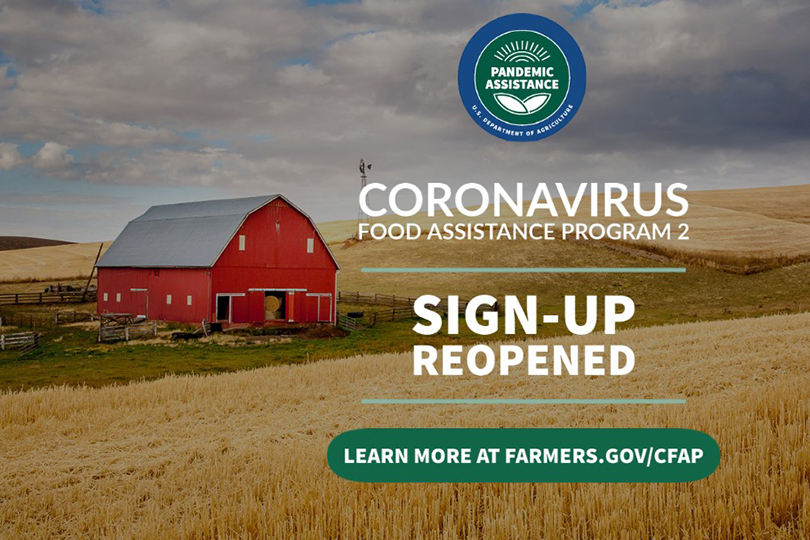By Jennifer Whitlock
Field Editor
Signup for the U.S. Department of Agriculture’s (USDA) Coronavirus Food Assistance Program 2 (CFAP 2) reopened Monday, April 5.
The CFAP 2 program was expanded to include a second round of aid last September with an original application deadline of Dec. 11.
But agricultural groups, including American Farm Bureau Federation (AFBF), asked U.S. Secretary of Agriculture Tom Vilsack to extend application deadlines after payments were suspended as part of an administrative review under incoming President Joe Biden’s administration.
“The recent Regulatory Freeze Pending Review on all new and pending executive actions, though common during a change in administration, has created confusion for farmers and ranchers with respect to eligibility and the application process for the Coronavirus Food Assistance Program—Additional Assistance,” AFBF President Zippy Duvall wrote in a February letter to Vilsack. “Although Farm Service Agency (FSA) offices continued to accept applications during the regulatory freeze, some farmers may have interpreted the implementation suspension to mean that the program was being modified or potentially terminated.”
Duvall also noted severe winter weather may have impacted farmers’ and ranchers’ ability to complete the application process.
Following a regulatory review and after “identifying gaps in previous aid,” USDA announced a new Pandemic Assistance for Producers program in late March that includes additional CFAP 1 and 2 assistance, as well as an extension of the CFAP 2 signup period.
Updates to CFAP 2 include additional assistance of $20 per acre for farmers of eligible price-trigger or flat-rate crops, including corn, sorghum, upland cotton, peanuts and rice. USDA estimated those payments would total more than $4.5 billion in additional aid.
Farmers and ranchers may apply for CFAP 2 online, by manually filling out forms and returning to the FSA office at their county’s USDA Service Center, or by visiting their local FSA office for assistance.
For more information, visit USDA’s CFAP resource page.

